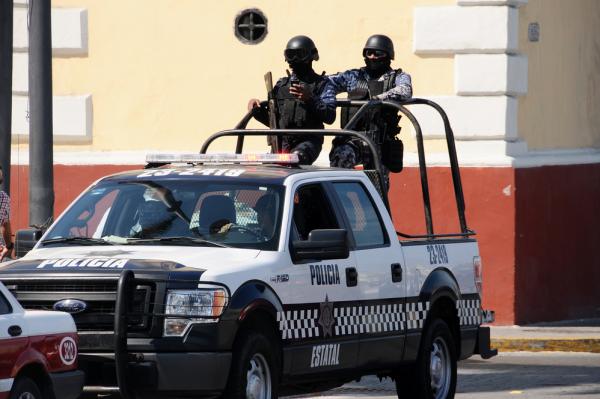
May 9 (UPI) — The International Institute for Strategic Studies said Mexico has become the world’s second-most deadly conflict zone following Syria due to the ongoing drug war in which 23,000 people were killed in 2016.
In its annual Armed Conflict Survey, the IISS said violence caused by organized crime reached levels of a traditional armed conflict. Regionally, 39,000 people were killed in Mexico, Honduras, Guatemala and El Salvador.
For comparison, there were 17,000 intentional homicides in 2015 and 15,000 in 2014 in Mexico.
The IISS said it is rare for criminal violence to reach levels similar to armed conflict and that organized crime in Mexico, Honduras, Guatemala and El Salvador threaten the fundamental components of those countries.
The IISS said the countries have been facing such violence for years and that it is “not a one-off wave of banditry but a truly strategic challenge.”
“In all four countries, armed forces have been deployed for many years specifically to fight criminal gangs and, in the case of Mexico, transnational drug-trafficking cartels, with military-grade weapons and vast financial resources,” the IISS said in a statement. “In all four countries, criminal groups have ambitious territorial claims: They fight among themselves and use arms to challenge the state directly for local control. Unlike traditional political conflicts, these criminal conflicts are fought to establish autonomous territories, not to pursue national politico-ideological goals.”
In 2016, 50,000 people died in Syria, 23,000 died in Mexico, 17,000 died in Iraq, 16,000 died in Afghanistan, and 7,000 died in Yemen.
While Syria faces a deadly civil war, the IISS said the rise in homicides in Mexico is linked to escalating rivalries between drug cartels, which often turn deadly. In April, a shootout between rival drug cartels left nine civilians dead near in the Churumuco municipality.
Though homicide rates decreased in Honduras, Guatemala and El Salvador, the IISS said the problem in Mexico “is getting worse.”
The Mexican states of Veracruz, Zacatecas and Colima saw the highest increase in the homicide rate last year, a threefold rise, partly due to a power grab by the Jalisco New Generation Cartel, which is fighting Joaquin “El Chapo” Guzmán’s powerful Sinaloa Cartel.
The IISS said the “aggressive and brutal” circumstances in Mexico is traced to the militarization of organized crime to compete against each other and to fight Mexican security forces.





